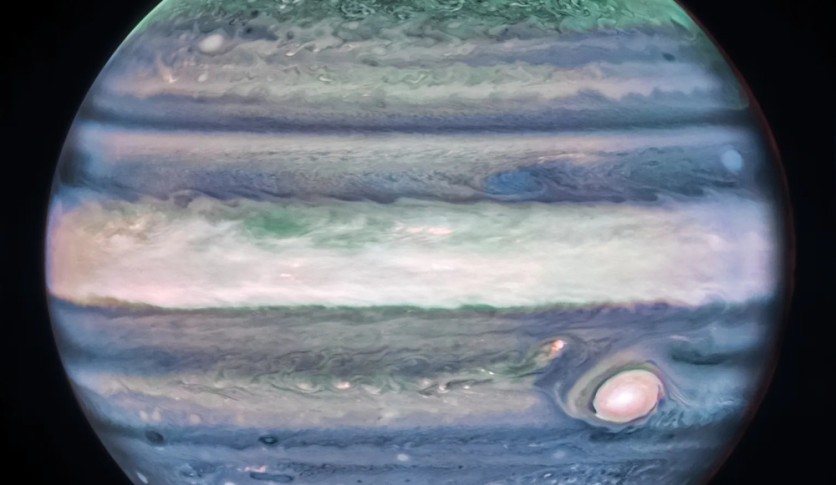
Io, often called the most volcanically active world in the Solar System, recently made headlines as NASA's Juno probe swooped in for a close-up look.
As ABC News reports, citizen scientists processed the raw data captured by Juno, unveiling Io's tumultuous landscape in mesmerizing detail.
NASA's Juno Probe Unveils the Fiery Heart of Jupiter's Moon Io
Hundreds of volcanoes dot Io's surface, and some erupt with lava fountains that shoot kilometers into the void. Incredibly, these volcanic explosions are sometimes visible from Earth. On the surface, lakes of molten silicate lava glimmer ominously.
Jupiter's moon Io, the most volcanically active world in the solar system, as seen by the #JunoMission on Oct. 15. More at https://t.co/Ql7aCQvRqY
— NASA Solar System (@NASASolarSystem) October 17, 2023
📸 Processed by Kevin M. Gill https://t.co/rVgUz5mLtb pic.twitter.com/ntVWdJcZbZ
These newly released images, processed by eager citizen scientists, expose Io's surface as a chaotic canvas of molten-red patches and swirling features.
The moon, slightly smaller than Earth's moon, is in a relentless cosmic tug-of-war between Jupiter's gravity and the gravitational pulls of its neighboring moons, Europa and Ganymede. This gravitational tumult stretches and compresses Io, fueling the constant eruptions from its numerous volcanoes.
Juno, NASA's intrepid spacecraft, is set to return for another close encounter with Io in December, when it will buzz just 1,500 kilometers above the moon's tumultuous surface, providing an even closer look at this extraterrestrial volcanic spectacle.
NASA's Webb Telescope Uncovers Jupiter's Hidden Secret
While Io offered a close-up spectacle, NASA's James Webb Space Telescope focused on Jupiter itself, revealing an awe-inspiring secret lurking in the gas giant's atmosphere.
Using data captured by Webb's Near-Infrared Camera (NIRCam) in July 2022, scientists made a groundbreaking discovery: a high-speed jet stream spanning over 3,000 miles (4,800 kilometers) wide, perched right above Jupiter's equator.
This newly identified jet stream is a celestial speedster, racing at a mind-boggling 320 miles per hour (515 kilometers per hour) - twice the sustained winds of a Category 5 hurricane on Earth.
Situated approximately 25 miles (40 kilometers) above the planet's cloud layer in Jupiter's lower stratosphere, this jet stream presented a revelation that sent shockwaves through the scientific community.
Infrared, visible, radio, and ultraviolet observations primarily probe Jupiter's lower, deeper atmospheric layers, where immense storms and ammonia ice clouds reign. With its unique ability to delve deeper into the near-infrared, Webb focused on the higher-altitude layers, approximately 15-30 miles (25-50 kilometers) above Jupiter's cloud tops.
This expanded view revealed high-altitude hazes, typically appearing as indistinct blur in previous observations, now manifesting as crisp features within a brilliant, hazy band encircling the planet.
Furthermore, Webb and Hubble observations conducted just one day apart allowed scientists to examine the development of convective storms unrelated to the jet, shedding light on the dynamic processes in Jupiter's equatorial region.
The team is eagerly anticipating additional observations with Webb, which will determine if the jet's speed and altitude fluctuate over time.
Jupiter's equatorial stratosphere, marked by a complex yet repetitive pattern of winds and temperatures, could provide insight into the potential variability of the newfound jet stream in the coming years.
Stay posted here at Tech Times.
Related Article : NASA's James Webb Discovers New, Never-Before-Seen Feature in Jupiter's Atmosphere-What Is It?

ⓒ 2025 TECHTIMES.com All rights reserved. Do not reproduce without permission.




